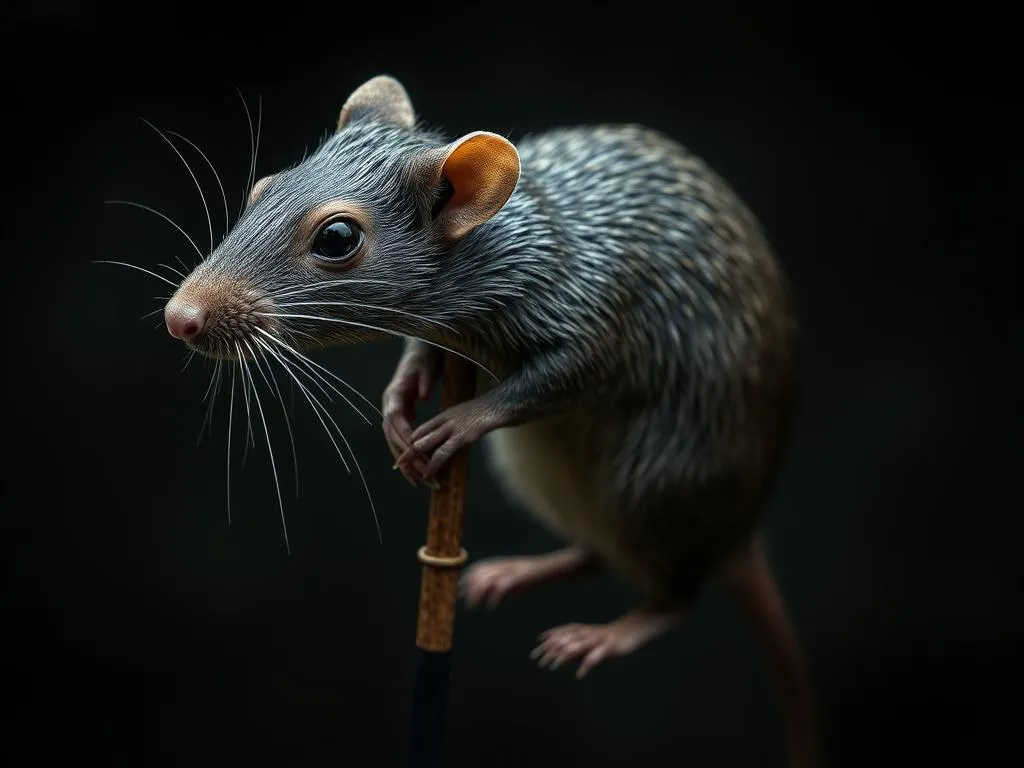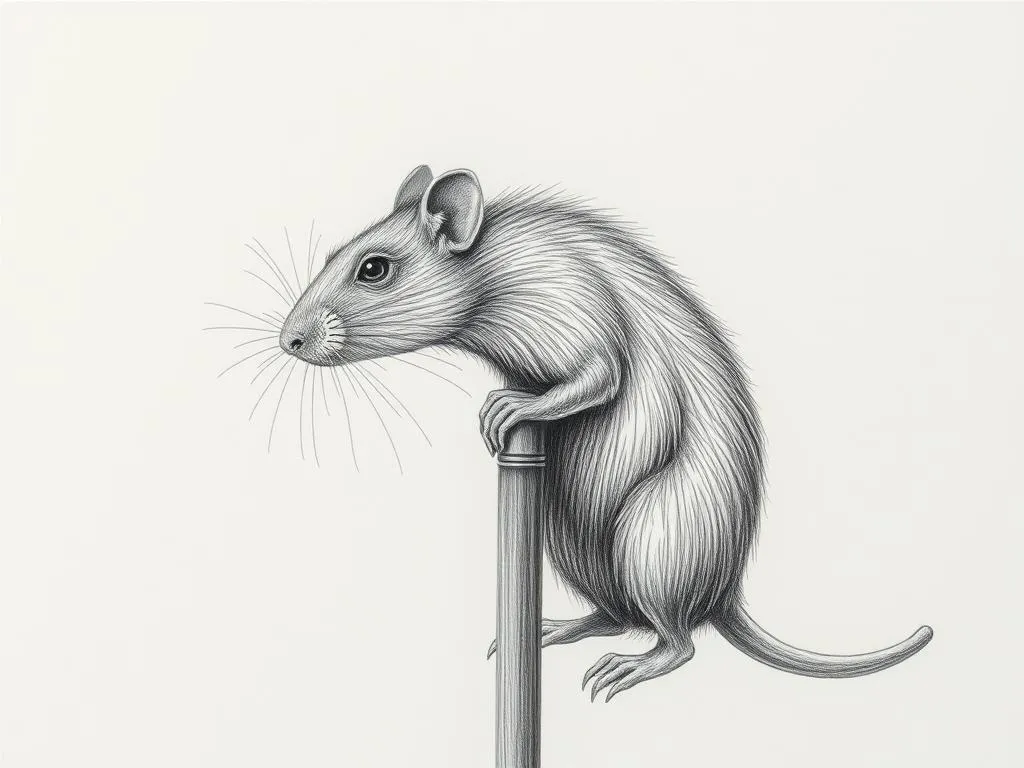The Intriguing Symbolism of the Cane Rat: Nature’s Resilient Mammal

Disclaimer: Some images on this website are AI-generated artworks and may not accurately represent real animals.
The cane rat, a unique and often overlooked mammal, holds a wealth of symbolism and meaning that resonates deeply within various cultures. Known for its adaptability and resilience, this rodent species embodies qualities that inspire personal growth and community spirit. In this article, we delve into the fascinating world of the cane rat, exploring its physical characteristics, behaviors, and the profound symbolism it represents.
Understanding the Cane Rat
Overview of the Cane Rat
The cane rat, scientifically known as Thryonomys swinderianus, is primarily found in sub-Saharan Africa, thriving in dense vegetation and wetlands. These mammals prefer habitats that offer ample cover, such as cane fields, marshes, and grasslands. Their ability to adapt to diverse environments is a testament to their resilience.
Cane rats play a crucial role in their ecosystems. As herbivores, they contribute to the management of plant growth, helping to maintain ecological balance. Moreover, they serve as a food source for various predators, thus supporting the food web.
Culturally, cane rats hold significance in several African communities. They are often regarded as symbols of abundance and fertility, and their meat is a delicacy in many regions. This cultural importance further enhances their symbolism and meaning in various societies.
Physical Characteristics
Cane rats are medium-sized rodents, and their physical features contribute to their adaptability. Below is a summary of their key characteristics:
| Feature | Description |
|---|---|
| Size | 40-60 cm in length |
| Weight | 4-8 kg |
| Fur | Coarse, thick fur, usually brownish |
| Tail | Shorter relative to body length |
| Teeth | Strong, continuously growing incisors |
Their robust build and strong teeth are adaptations that allow them to thrive in their natural habitats, where they primarily feed on grasses and agricultural crops.
Behavioral Traits
Cane rats exhibit fascinating social structures. They are generally social animals that live in family groups or colonies. This social behavior is vital for their survival, as it facilitates cooperative foraging and predator awareness.
Their diet consists mainly of grasses, leaves, and tubers, making them important players in their ecosystem. By consuming various plant materials, they help control vegetation growth, allowing other species to flourish.

Symbolism & Spiritual Meaning
Resilience and Adaptability
One of the most prominent aspects of cane rat symbolism is its resilience. These mammals thrive in challenging environments, often overcoming obstacles that would deter other species. Their ability to adapt to changing conditions serves as a powerful reminder of the importance of resourcefulness in our lives.
The lessons learned from the cane rat can inspire individuals to face life’s challenges with determination. Just as the cane rat forages for food and navigates its environment, we too can cultivate resilience and find ways to overcome adversity.
Community and Cooperation
Cane rats are not solitary creatures; they thrive on social connections. Their cooperative behavior highlights the significance of community and teamwork. In the wild, these mammals rely on one another for protection and food, embodying the essence of collaboration.
The symbolism of community is especially relevant today, as it encourages us to foster relationships and work together towards common goals. The cane rat teaches us that strength often lies in numbers and that collaboration can lead to greater achievements.
Fertility and Abundance
In many cultures, cane rats are associated with fertility and agricultural abundance. Their presence in the fields is often seen as a sign of a bountiful harvest. This connection to agriculture underscores their role in sustaining life and providing nourishment.
The symbolism of fertility extends beyond mere reproduction; it represents growth, prosperity, and the cyclical nature of life. Embracing this symbol can inspire individuals to nurture their aspirations and cultivate a mindset of abundance.
Cane Rat in Dreams
Common Themes
Dreaming of cane rats can evoke various themes, often tied to their symbolism and meaning. Here are some common interpretations:
| Dream Theme | Symbolic Interpretation |
|---|---|
| Abundance | A sign of material wealth or prosperity |
| Community | Emphasizes the importance of social connections |
| Resilience | Encouragement to face challenges head-on |
| Adaptability | A reminder to embrace change and flexibility |
Each theme reflects aspects of the cane rat’s life, offering insights into our own experiences and challenges.
Messages and Guidance
When cane rats appear in dreams, they may convey important messages. For instance, encountering a cane rat could signify a need for personal growth or a reminder to embrace adaptability in the face of change.
These dreams often encourage individuals to tap into their resourcefulness and resilience, urging them to navigate life’s challenges with confidence. The cane rat serves as a guide, reminding us that we possess the strength to overcome obstacles.
Modern Interpretations
Cane Rat in Popular Culture
In contemporary literature and media, the cane rat has found its place as a symbol of resilience and community. Its representation often mirrors the themes of survival, adaptability, and the importance of social bonds.
Artistic interpretations of the cane rat can be seen in various forms, from illustrations to storytelling. These representations not only highlight the animal’s physical characteristics but also delve into its deeper symbolism and meaning.
Environmental and Conservation Perspectives
From an environmental standpoint, the cane rat plays an essential role in maintaining biodiversity. As a part of the ecosystem, it contributes to the health of its habitat by influencing plant growth and serving as prey for larger animals.
Current conservation efforts focus on preserving the cane rat’s natural habitat and ensuring its survival amidst environmental changes. Recognizing the cane rat’s ecological importance reinforces the need for sustainable practices that support biodiversity and ecosystem health.
Key Takeaways
- The cane rat embodies resilience, reflecting the importance of adaptability in facing life’s challenges.
- Its social structure emphasizes the value of community and cooperation, encouraging teamwork and collaboration.
- The association with fertility and abundance serves as a reminder to nurture growth and prosperity in our lives.
Personal Reflections
The symbolism of the cane rat can inspire individuals in various ways:
- Embrace resilience and adaptability in the face of challenges.
- Foster social connections and recognize the power of community.
- Cultivate a mindset of abundance and growth in personal and professional endeavors.
Conclusion
In summary, the cane rat is more than just a resilient mammal; it symbolizes strength, adaptability, and the importance of community. As we navigate the complexities of modern life, the lessons drawn from the cane rat can guide us toward a more fulfilling existence.
Embracing the wisdom of the cane rat encourages us to appreciate the beauty of resilience and the power of collaboration. By embodying these qualities, we can foster personal growth and contribute positively to our communities. The cane rat, in all its humble glory, serves as a reminder that even the smallest creatures can have a profound impact on our lives and the world around us.







